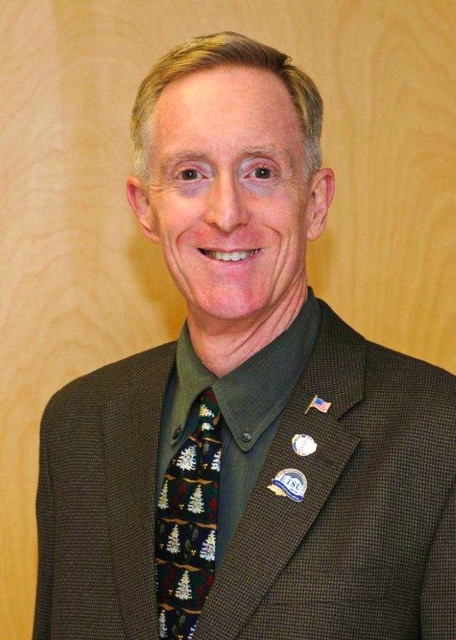
JOHNSON CITY, TN — When Terrence O’Neil, MD, retired as chief of nephrology at the James H. Quillen VAMC in Johnson City in December 2016, he left in his wake decades of work treating kidney disease—nearly 35 years in the Air Force and DoD, plus 11 more at VA. But it’s his future work that might most affect the lives of veterans.
One thing that 46 years in nephrology taught O’Neil is that the prevailing model for renal disease care is insufficient, because it focuses far more on acute illness than prevention. The result, he explained, is a steady progression of patients with end-stage renal disease (ESRD).
But a multidisciplinary model—one that has the mandate to intervene earlier in a patient’s progression—could have a significant impact on how many patients end up in dialysis.
In a paper published last September in the American Association for Physician Leadership, O’Neil and co-author, William Scott Moore, MD, nephrologist and director of the dialysis unit at Quillen and Mountain Home, TN, VAMCs, noted that, of the 53,000 patients seen at the Quillen VAMC, 8,000 were in Stage 2 or higher ESRD. More than 4,000 were in Stage 3 or higher. Some of those had up to five risk factors placing them at greatly increased risk for ESRD progression. Those risk factors include diabetes, obesity, smoking and high blood pressure.
While it’s simplistic to say that most ESRD is preventable, it can be said that many of its risk-factors, especially those connected to lifestyle, are excellent targets for prevention efforts. However, the current model makes prevention-focused care difficult.
“Incidents of ESRD are rising. Most of them are going on dialysis. There are very few transplants. And worse, most of the ones going on dialysis are on the most expensive form,” O’Neil explained. “What I saw over time as I was practicing nephrology is that over 90% of ESRD is potentially preventable, if you can get control of their lifestyle. But because we can’t get control of that, there are over 700,000 Americans on dialysis right now. That’s the population of Albuquerque.”
On average, dialysis costs $80,000 a year per patient, with a kidney transplant costing up to $250,000. “That’s a shocking bill, if 90% of it is potentially preventable,” O’Neil said.
But the current model—nephrologists working in isolation rather than as part of a tightly-knit team—is unlikely to have an impact on the larger trend. “A nephrologist in isolation has 20 minutes to look at a patient who could be on as many as seven meds, get the coding right, get the prescription right—there’s no time left to look at lifestyle,” O’Neil said.
O’Neil is advocating for a multidisciplinary model of care—one that includes a renal dietician, nurse educator, pharmacist, clinical social worker, data analyst, nephrologist and others. This team could identify those patients who are high risk, target those areas of the patient’s lifestyle that would impact risk factors and prevent the patient from progressing to the point where they go on dialysis.
“We need to take the model of care and make it data-driven, team-based, and outcome-responsive,” O’Neil explained. “We can take these patients who our data analyst says are at high risk of renal failure and jump on them.”
A similar program implemented in Taiwan documented a 30% decrease in the annual incidence of ESRD under this type of nephrology care structure.
O’Neil has presented this model to VA leadership and, while there’s ideological buy-in, the ability to literally buy in to the model is proving difficult. “To hire those people—the core of that team—would cost $1.1 million a year. Because VA is decentralized, the VISN would have to come up with that money. Now, if we just kept 15 people the following year from going on dialysis, we’d make that money back. But the problem is coming up with the five dollars to save 25.”
Grant-giving organizations also want to see published documentation of this model being prototyped in the United States—something that hasn’t been seen in the literature yet.
Consequently, O’Neil is preparing for the long game. He and his partners at Quillen VAMC are building this mutidisciplinary renal disease clinic one piece at a time. “We have a pharmacist, a part-time nurse educator and an excellent part-time renal dietician who participates with me in once-monthly education classes for at-risk veterans.
“It’s going to take five years to show that this works,” he declared. “We want to be able to say with outcomes that we have been able to reduce the annual onset of end-stage kidney disease over those five years. Medicine is a team-based effort. With the right team, you can do anything.”
In the meantime, O’Neil is trying to make changes elsewhere to impact veterans with kidney disease. Currently, veterans seeking a transplant are required to use one of the seven VA hospitals scattered around the country that provide transplant services. O’Neil is advocating for a bill making its way through Congress that would allow veterans to use hospitals closer to them.
For patients in rural east Tennessee this could mean a 100-mile drive rather than a 400-mile one. “These veterans can’t afford to take time off to drive to one of the seven VA transplant services,” he explained. “So right now, they’re stuck on dialysis until they die. That’s not fair. They put the boots on the ground and took the risk. We need to care for them.,” he emphasized.

